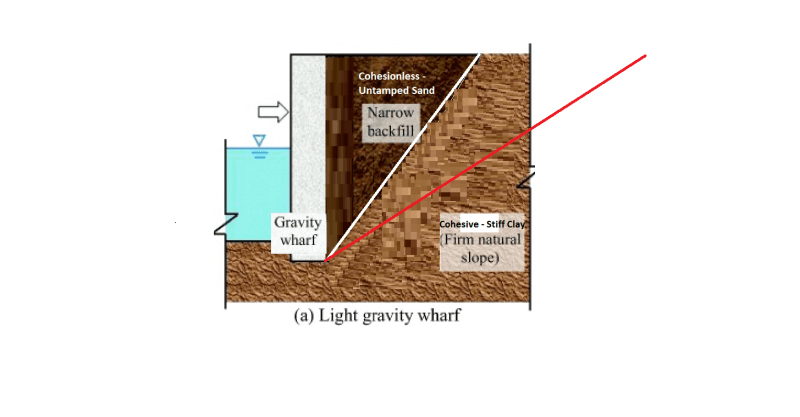Geotech-ing
Geotechnical
Assuming Rankine conditions, how would one estimate both the drained passive force and undrained passive force for cohesionless (phi') soil narrowly backfilled at an angle overlain on native cohesive soil (c'-phi'-su) like in the picture without using a trial wedge method or finite element methods?
We can assume that the passive failure surface strictly goes through the native stiff clay as shown by the red line and that the narrow backfill is 1H:1V/45 degrees shown by the white line.
The picture is edited from the research paper, Passive earth pressure of narrow cohesionless backfill against inclined rigid retaining walls under translation mode by Fu-Quan Chen et. al (2020)

We can assume that the passive failure surface strictly goes through the native stiff clay as shown by the red line and that the narrow backfill is 1H:1V/45 degrees shown by the white line.
The picture is edited from the research paper, Passive earth pressure of narrow cohesionless backfill against inclined rigid retaining walls under translation mode by Fu-Quan Chen et. al (2020)

